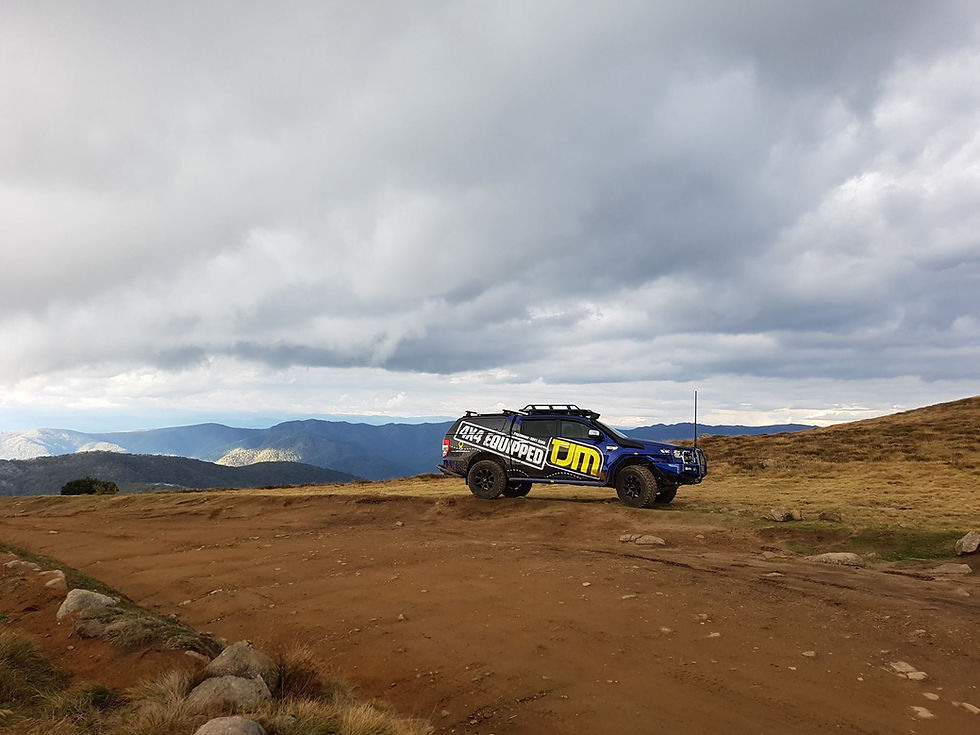How to Drive on Sand Without Getting Bogged
- Jul 19, 2018
- 4 min read

All 4x4 enthusiasts will recall the first time they drove on sand. I had butterflies in my stomach for the whole trip to the beach, and the nervous but exciting feeling when you try something new is always a thrill. My tyres hitting the sand made the nerves more prominent as my truck wiggled through the sand. Before too long, I hit a soft patch and became bogged, something which many off-roaders can relate too! Luckily, I was with another party so getting out was super easy using snatch strap, but getting out by yourself is an art that can only be mastered through experience. Of course, not getting bogged in the first place is the ideal scenario, but sometimes the best adventures happen when things do go wrong (and watching your rig get swept away with the tide is not what I’m talking about)!
It doesn’t matter if you’re a beginner or a professional 4WDer, we're all in a perpetual state of learning so today I’m going to shed some knowledge and offer some pointers on how to drive on sand without getting bogged.
Before you begin
Even if you don’t own a 4x4, most people understand that you must reduce the pressure of your tyres before driving on sand. The reason for this is that by lowering your tyre pressure, you distribute the weight of your vehicle over a larger surface area because the length of the tread pattern on your tyres are increased. Unfortunately, there’s a common misconception that lowering your tyre pressure until your tyres are bagging out in the sidewalls is sufficient. Well, this is a terrific way to get bogged! The only reliable indicator of your tyres being adequately deflated is with a well-calibrated tyre pressure gauge.
So, at what pressure should your tyres be before driving on sand? The standard measure is between 16 and 18psi, but it is crucial to think about the weight of your cargo. If you're driving a hefty load, you might need to reduce the pressure to around 14psi, but if you're travelling light, you can possibly get away with 20psi.
Technique
Now that we’ve got the easy part out of the way, the most difficult part of driving in sand is actually doing the driving! Your driving technique is the key to not getting bogged, and maintaining momentum is crucial because soft sand naturally reduces the power of your 4x4. Automatic 4x4’s are much easier to drive in sand than manuals because you can quickly increase your revs without having to change gears. But with manual vehicles, it’s paramount that you keep your revs marginally higher to ensure your wheels keep turning and you can power through soft patches of sand when needed. For this reason, it’s always advisable to keep your 4x4 in low range.
What to do if you get bogged?
If you get bogged and there's no assistance nearby, it’s imperative that you don't make matters worse by trying to force your way out; you’ll only get bogged deeper. I always bring beadlocks with me, which is a tool that lock the tyre's bead onto the rim of the wheel. The majority of people get bogged in soft granular sand, so the first thing you must do is lower your tyre pressure until you get traction. Normally, you can decrease your tyre pressure to about 8psi without beadlocks, and to around 5psi if you do. Practice makes perfect is especially relevant to getting bogged in sand, so the more you get bogged, the better you'll be at getting out!
Always keep in mind that when you lower your tyre pressure to this level, your vehicle's handling is drastically impacted, so you must be very cautious about any cornering not only to keep your vehicle from tipping, but to ensure your tyres stays on their rims. Also keep in mind that once the ground gets firm again, don't forget to inflate your tyres. Many accidents have been caused from individuals forgetting to inflate their tyres after driving in sand.
Additional tips
Be careful when turning
Be gentle on the brakes
Always drive above the high-tide mark so your vehicle doesn't get swept away if you get bogged
Always use indicators if there are other drivers on the beach
Always bring a tyre gauge and never attempt to guess tyre pressure
Always bring a snatch strap and long-handled shovel
Always bring an air-compressor to inflate tyres when you hit the bitumen
Look into buying a UHF radio so you can call for help
Contemplate buying beadlocks for when there's no assistance around
There's no question that driving along the beach is an experience we should all take pleasure in, but caution must always be exercised to ensure that you and everyone on the beach stays safe. If you're about to drive on sand, always be adequately prepared and use lots of common sense. If you need any 4WD products or accessories to make your next journey more enjoyable, TJM Australia have you covered with an enormous range of 4WD and camping accessories. For additional information, phone their head office on 07 3865 9999.




Comments